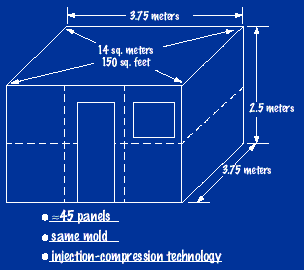
Figure 1: Single Unit Shelter with Dimensions[1]
|
|
|
|
|
|
|
Background
The world’s population contains approximately 600 million people without homes, or living in extremely inadequate conditions[1]. The Dædalus Project Inc. was developed to help provide a solution for population related problems throughout the world. If successful, this project will provide low-cost, easily assembled, composite shelters, using post-consumer waste. Recyclable plastics are to be used to fabricate molded panels, which can be placed together to create a suitable living environment for those in need throughout the world. The basic shelter will contain 45 panels assembled together to make a unit 3.75m x 3.75m x 2.5m, as shown in Figure 1. The Dædalus Project is hoping to initially develop a construction capacity of 100,000 shelter units for use all around the globe1.

Figure 1: Single Unit Shelter with Dimensions[1]
The shelter being developed can be used in a variety of climates including snow, wind, rain, and intense sunlight. I examined how these loads caused deflections in the shelter panels. I considered deflections rather then stresses because my part in this project focuses more on aesthetics then strength design. In designing the shelter to withstand these environmental loads, it is desirable to keep the deflection within “comfortable” limits, meaning that any deflection should not be visible to the naked eye. The impact of each of these environmental conditions was studied by developing computer and physical models to simulate the loading conditions, and material tests to simulate the environmental conditions.
The shelter will be marketed to both foreign and
domestic governments in hopes of reducing the worldwide homeless population.
In order to assist the marketing and design strategies of The Dædalus
Project Inc., the computer models developed for testing were also translated
into a format suitable for viewing in the Virginia Tech CAVE (CAVE Automatic
Virtual Environment). Utilizing the visualization capabilities of
the CAVE allows people to experience walking through a full-scale virtual
shelter. The CAVE also allows the user to determine if the deflections
predicted by the computer models are visually insignificant.
The file format that is used in the CAVE is also viewable on web browsers
equipped with the proper plug-in. This will allow clients of The
Dædalus Project Inc. to view the virtual shelter on their personal
computer, although it will not be a full-scale image. The clients
will also be able to see how the structure reacts to the environmental
loading conditions (i.e. deflections of the roof and walls).